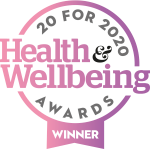
What is a gut-healthy diet?
Trying to get gut-healthy?
Here is the Gut Health Diet created by Shann Jones and our team of Chuckling Goat Nutritional Advisors.
We’re going to assume that you are already consuming on a daily basis:
The kefir puts the “fish back in the river” of your gut, the Complete Prebiotic feeds those fish and the collagen restores the lining of your gut. For more detail on how to take your kefir properly, read the blog post here.
But what else can you do, on your gut health journey? What can you eat, to complement, boost and maximise your kefir + prebiotic?
You can boost your gut health results by following a few simple principles. In a nutshell, a gut healthy diet is:
- Low GI
- High in good fats
- High in fibre
- High in food diversity.
Let’s break this down. What do we mean?
Low GI foods
First and foremost, you’re going to eat low on the Glycaemic Index, or GI. The glycaemic index (GI) is a rating system for foods containing carbohydrates. It shows how quickly each food affects your blood sugar (glucose) level when that food is eaten on its own.1
Every carbohydrate that you eat is converted into glucose, or sugar. Glucose is the energy currency of your body. The question is – how fast does the food get converted into sugar?
Imagine that your body is a fireplace, and food is fuel. Some food is like newspaper – it burns to sugar very quickly, causing a huge spike and then a rapid drop. These are “High GI foods” which include sugar and sugary foods, sugary soft drinks, white bread, potatoes and white rice.
Some foods are more like slow-burning wood in the fireplace – they get broken down slowly, over time, without a huge flare. These are “low GI foods” like fruit and vegetables, pulses and wholegrain foods, such as porridge oats. Because these foods break down slowly, they trickle sugar into your system instead of dumping a load of sugar all at once, causing an insulin surge.
Low GI foods are much better for your gut health2. An easy way to eat low GI foods – simply type into your phone, “What is the GI rating of xxx?” As a rule of thumb, if it has a GI rating of 55 or lower, you can eat it. 56 or higher, avoid it.
Eat good fats
Healthy fats are important for gut health. These include things you would find in the “Mediterrean diet”3 – olive oil, oily fish, avocado, walnuts, flaxseed oil.4 A simple way to add good fats into your diet is to pop 1 TBSP of flaxseed oil (one of nature’s richest and best sources of vegetable-based, vital omega-3 fatty acids)5 into your kefir smoothie and whizz it up – job done! Put a bowl of walnuts, almonds or unsweetened coconut flakes out so that you can grab a few as a snack, or slip a small bag of these health-boosting goodies in your pocket to deal with hunger pangs during the day.
Good fats are not only important for gut health, but they also boost your feeling of satiety, or fullness, so that you can beat cravings and make better food choices.
Eat more fibre
The WHO recommendations for fibre is 30 grams per day; most British adults are consuming only 10- 15 grams. Fibre feeds your gut bugs; they ferment fibre and turn it into important short-chain fatty acids that reduce inflammation inside the gut. How to increase your fibre? Here are three tips:6
- Fruits and vegetables are always your friend. Fiber is naturally found in all fruits and vegetables. You can’t really go wrong by adding these components to your daily regime.
- Eat what’s in season. Always check out your grocery store’s fresh, in-season fruits and veggies. Not only are they great for you, but they also often taste better and are less expensive than what’s out of season.
- Processed foods usually mean less fiber. Refined foods that don’t contain whole grains or whole wheat are also lower in fiber. This includes white bread and regular pasta. Juicing is also processed in a sense, since it removes the insoluble fiber from your food. The result is that you lose fiber’s benefits — especially its important job of regulating digestion and keeping blood sugar from spiking.
Avoid cow dairy
Most people who are intolerant of cow milk are actually sensitive to one of the proteins found in it, A1 casein, and lack the ability to digest it. Additionally, cow milk is the No. 1 allergy among children and can persist throughout adulthood. That’s because it contains more than 20 different allergens (including A1 casein) that can cause allergic reactions. Cow milk allergy symptoms are often confused for seasonal allergy symptoms. It’s easy to see why. Cow’s milk allergy symptoms can range from hives and runny noses to abdominal cramping and colic in babies.7
What’s the big deal with A1 casein? This protein is highly inflammatory for some people, and inflammation is at the root of most diseases. A1 casein can contribute to gastrointestinal issues like irritable bowel syndrome, Crohn’s, leaky gut and colitis. It also may play a role in several less obvious problems, such as acne, autoimmune diseases and skin issues like eczema.8 9
On the other hand, milk that contains mostly or exclusively A2 casein produces none of these inflammatory effects. Goat milk contains only A2 casein. That makes it, protein-wise, the closest milk to human breast milk. In fact, one study suggests that goat’s milk, when used as the first protein after breastfeeding, is less allergenic for babies than cow milk.10
Rather than giving up dairy altogether and missing out on all the valuable calcium and nutrients it contains, try switching to goat cheese, butter, milk and yogurt. You may also try unsweetened oat, almond or rice milk.
Avoid gluten – eat “good grains” instead.
If you are dealing with IBS symptoms, we recommend avoiding gluten until your symptoms resolve. Gluten is found in wheat products including whole wheat and wheat bran, as well as other grain products like barley and rye. Once your gut has recovered, these products will ultimately be good for your microbiome, as they contain insoluble fibre for your gut bugs to ferment. But they may exacerbate your IBS symptoms, so wait until your IBS has resolved, before adding gluten back into your diet. Try small amounts, and see how you react. If you experience any pain or discomfort, continue to avoid gluten for a period of time and then try again. Over time, kefir will improve your ability to handle gluten. Grains like oatmeal, quinoa, amaranth, millet and buckwheat do not contain gluten. These may be a good choice for you in the meantime, as it’s important to continue to eat whole grains during your IBS recovery, for the dietary fibre they provide.
You may also wish to avoid the nightshade family in the early stages of your journey: tomatoes, potatoes, peppers and eggplants. Onions, garlic, cashews and peanuts are all high in lectins, which are gut irritants. A healthy gut can easily cope with these lectins, and once you have recovered, they will aid your gut health if they are on your personalised recommendation list. Once your symptoms have resolved and you are feeling comfortable again, try adding these lectin-high items back into your diet, one at a time, in small amounts. Kefir will improve your gut health over time, so if you react to a trial, try drinking the kefir for another few months and then try again.
Add a rainbow to your plate!
Although a restrictive diet like the low FODMAP diet can improve IBS symptoms in the short term, over the long run it has been shown to negatively impact your gut health.11 This is because it’s not solving any problems – it’s simply avoiding irritants.
If you’re in a very acute phase of reaction, avoid the things that you know trigger a flare-up.
But your ultimate goal should be to add a joyful diversity of fruits, veggies and whole grains back into your diet over time, as your gut health improves with the addition of kefir, prebiotic and good fats.
Try to work through all the colours of the rainbow in fruits and vegetables every day, and rotate your colours – if you have beetroot for your red choice one day, try raspberries the next.
Your gut bugs themselves are very biodiverse, and they each thrive on different phytonutrients, so it’s important to consume a variety of foods to feed them!
Ultimately your target should be to increase the health and biodiversity of bacterial strains inside your gut until you can tolerate – and are eating – 50 different foods a week. Like the planetary ecosystems around us, a healthy microbiome is a biodiverse microbiome. You want lots of different strains of gut bugs in there, and you need to eat lots of different kinds of food to feed them all.
How long does it take to improve your gut health through diet?
You should begin to see results within 12 weeks.
However the length of time it will take to improve long-term health issues depends on how damaged your gut is to begin with, how long it’s been that way, and how dedicated you are to adopting new, gut-healthy habits.
Natural healing through food and diet is a slow and gradual process. This is a different process to covering up a symptom with a chemical drug, while leaving the root of the problem intact. Healing through food works more along the time frame of gardening, or farming. You’re restoring the health of your inner ecosystem, which will restore your immune and overall health. It’s like feeding the soil, instead of pouring chemical fertilisers on the plant. Slow and steady improvement is what you’re after!
To track those subtle shifts in your wellbeing over time, it’s important that you have a metric underneath your own experience! Keep close track of your progress, marking each symptom 1 to 10 daily. You can use the downloadable health journal here if you like:
www.chucklinggoat.co.uk/gss/gut-health-journal.pdf
We’re always here to help you along your journey! Everyone on our team is a fully trained Nutritional Therapist, and we’re available to chat 8 am to 8 pm weekdays.
















